Numerous plants exist in the natural world, and each one is unique in terms of color and aesthetic appeal. Nowadays, our busy life drives us to come home as much as possible, therefore houseplants are likewise wonderful gifts provided by nature. Some of them adapt well to indoor environments with only the most minimal maintenance. Because of this, you can simply get some and cultivate them at home so that you may enjoy their beauty.
However, you will undoubtedly like adding unusual species to your collection if you love plants. Surprisingly, we bet you’ll be astounded by the 26 types of houseplants that are on display today. In addition to having strange and odd leaves that give your living area a unique look, they also assist other plants in shining out in the most exciting manner. To learn more, look them up.
#1. Corkscrew Rush (Juncus Effusus ‘Spiralis’)

At maturity, Spiralis Corkscrew Rush reaches a height of 18 inches and a width of 18 inches. It usually has dense foliage that extends all the way to the ground, negating the need for facer plants in front. It develops quickly, and under perfect circumstances, it has an estimated 8-year lifespan.
#2. Seersucker Plant (Geogenanthus Poeppigii)

Geogenanthus Ciliatus grows slowly to moderately, and with the correct care and environmental factors, it may reach heights and widths of 6 to 8 inches.
#3. Wine Cup (Crassula Umbella ‘Wine Cup’)

It’s a stunning succulent plant with a height of around 15 cm. Its thin leaves create an umbrella-like shape.
#4. Heart Leaf Fern (Hemionitis Arifolia)
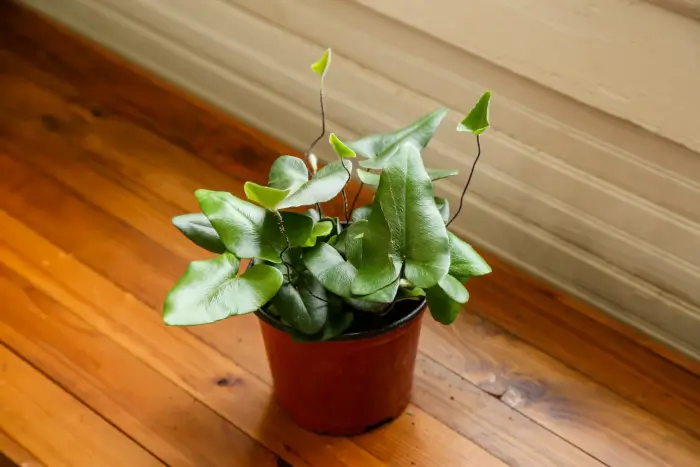
This fern stands out from others in addition to having gorgeous leaf shapes. Its leaves first appear as thinly-haired, black stalks that finally emerge to expose a single tiny leaf. The leaf constantly develops into a developed shape, unlike other ferns that emerge from an uncoiling crozier.
#5. Barbillion Echeveria (Echeveria Gibbiflora ‘Barbillion’)
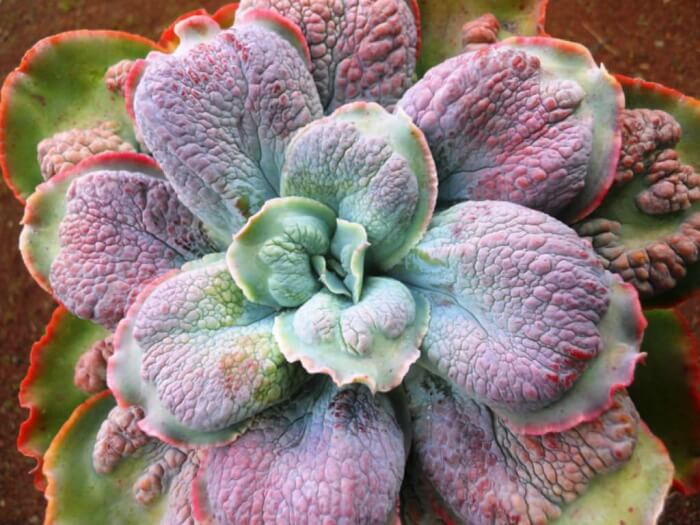
This Echeveria can reach 45 cm. It will slowly elongate on a big, naked stem as it ages. This plant’s capacity to change color and shape throughout the seasons is what makes it very beautiful.
#6. Pangolin (Crassula ‘Pangolin’)
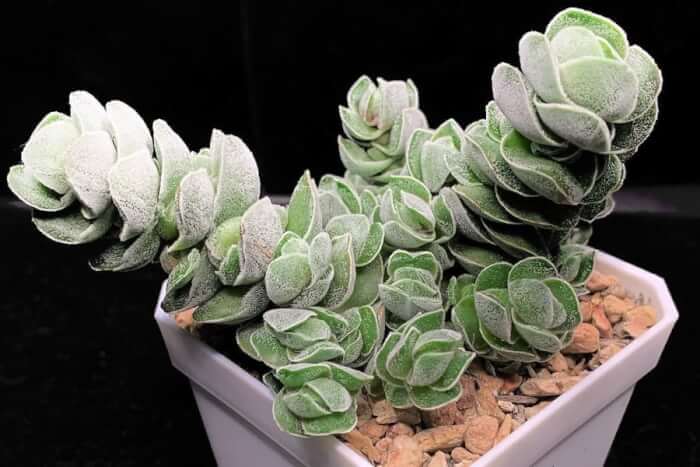
This species of slow-growing succulent features erect columns of cupped, overlapping, powdered green leaves. reveals globular clusters of tiny, creamy-white blooms. It is a small, slowly growing, and low-maintenance plant. Make sure the soil is well-drained and away from heat reflections.
#7. Baby’s Necklace (Crassula Rupestris)

The succulent plant Crassula ‘Baby’s Necklace has hefty, piled, grey-green leaves with accents of crimson red. They develop into clumping columns that finally collapse under their weight. When the plant is under stress from environmental conditions, the beautiful accents become more noticeable.
#8. Jewel Orchid (Macodes Petola)
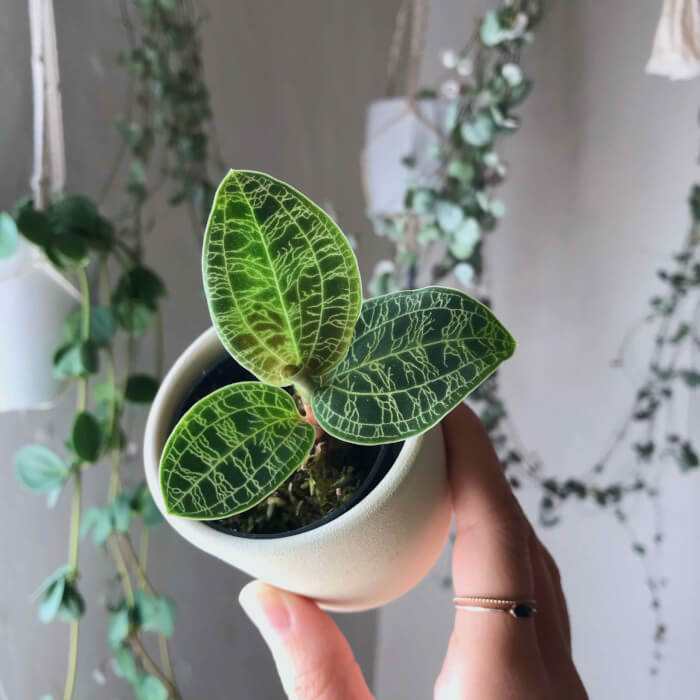
Tropical Jew Orchids are native to Southeast Asia’s forest floors. The leaves of jewel orchid plants have striking pinstripe patterns and are dark green. Fall, winter, and the first few weeks of spring are the time when white flower spikes bloom. Jewel orchids have a maximum height and width of twelve inches.
#9. Marimo Moss Ball (Aegagropila linnaei)

Those adorable tiny spheres of greenery known as marimo moss balls (also known as Aegagropila linnaei) are not formed of moss at all. They are a filamentous colony, freshwater green algae. Marimo are highly popular in Asia because of their minimal maintenance requirements and attractive appearance.
#10. Striped Begonia (Begonia listada)

Begonia listada, often known as Striped Begonia, is an evergreen perennial plant with lovely hairy leaf. Small, hairy, dark-green leaves with a lime-green midrib and border make up the foliage. White 5-cm-wide flower panicles are produced by this plant. It isn’t resilient.
#11. Crinkle Leaf Plant (Adromischus cristatus)
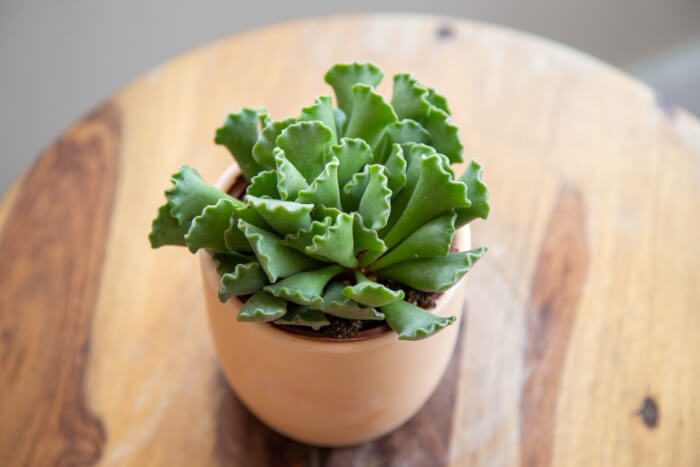
The fleshy, triangular, gray-green leaves of this plant are tiny and slow-growing, growing upward from a central base and crinkling at the top.
#12. Ant Plant (Dischidia Pectinoides)
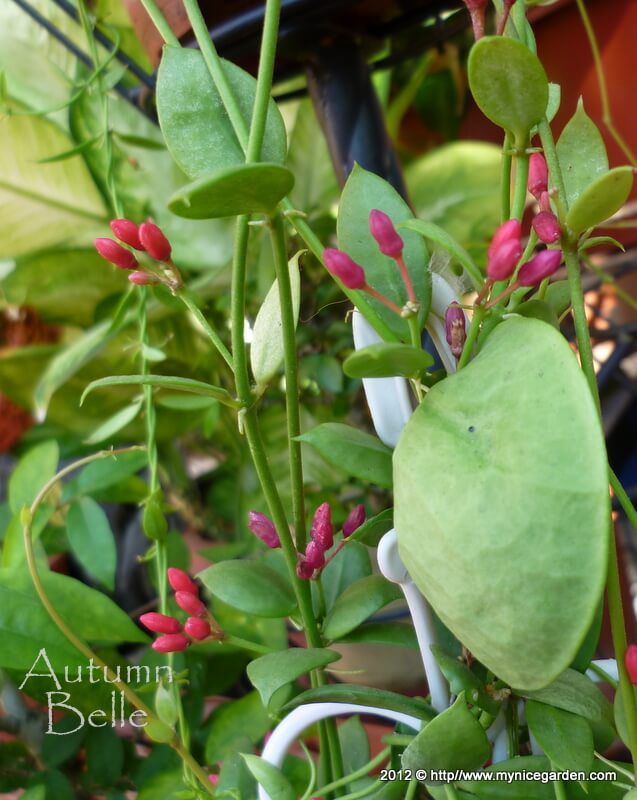
Because of their special symbiotic association with ants, these plants are often referred to as “ant plants.” The unusual species of Dischidia Ant plants has several intriguing characteristics.
#13. Spotted Begonia (Begonia Amphioxus)

It features narrow, dark crimson borders and pointed, peltate leaves with dark red spots. The plant is attractive thanks to its unusual form, colors, and speckling pattern. Additionally, this beauty makes its own blooms! Any time of year, the plant’s charming little distinctive blooms appear.
#14. Vietnam Ferox (Begonia Melanobullata)
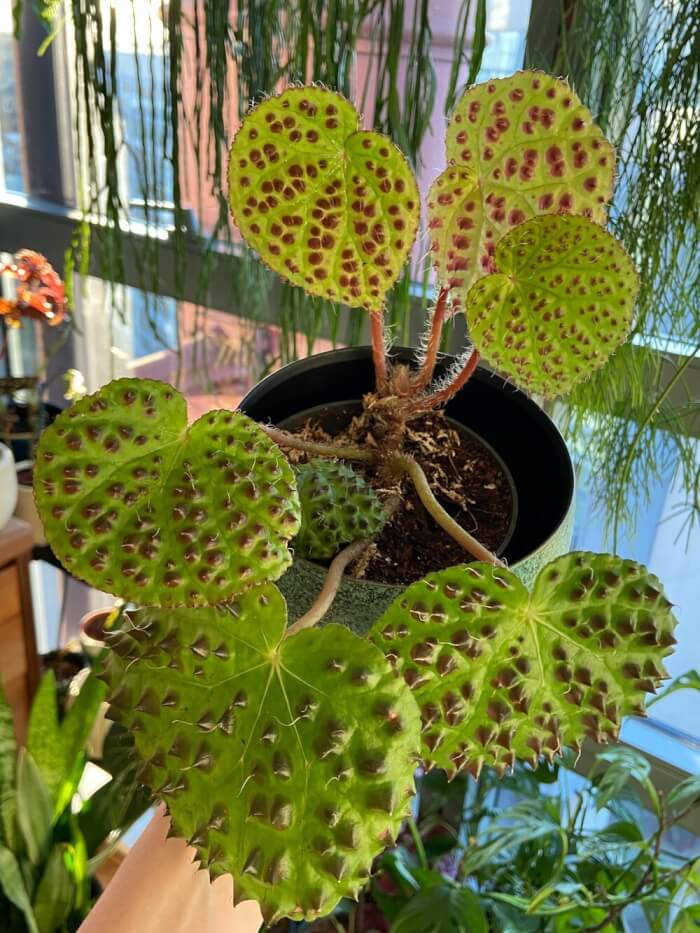
A rare and recently found species of begonia hails from the hilly region of northern Vietnam. This Begonia has green leaves covered with elevated, flattened black spikes that are not pointy to the touch. Each spike has a single orange and white hair sprouting out of it.
#15. Parachute Plant (Ceropegia Sandersonii)
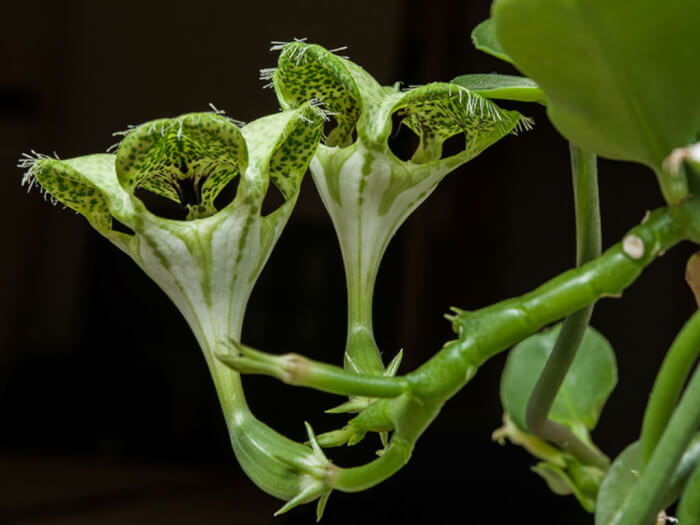
The evergreen, succulent Ceropegia Sandersonii produces delicate twining stems with heart-shaped leaves and lone, parachute-shaped blooms at the end of 5 cm long funnel-shaped tubes.
#16. Leopard Plant (Farfugium Japonicum)

It is a perennial with clump-forming leaves that are very big, long-stalked, leathery, kidney-shaped, glossy, and dark green. It thrives in mild winter regions, but when temperatures drop below 20°F, the foliage turns brown.
#17. Spiralis Cactus (Cereus Forbesii ‘Spiralis’)

It has white, fluffy areoles from which small, yellow-brown needle-like spines protrude. It produces enormous, gorgeous blooms with a funnel form and a pink-white color during the flowering season.
#18. Starfish Cactus (Stapelia Grandiflora)
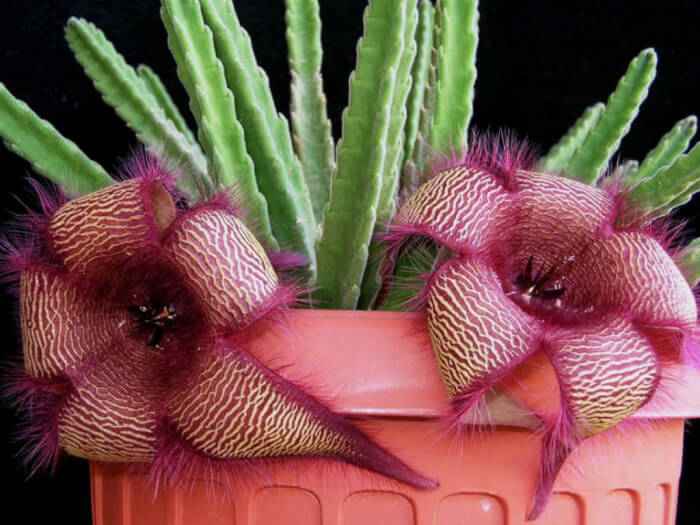
Hardiness zones 10–11, Stapelia Grandiflora produces giant carrion blooms and 14-inch yellow flowers with red bands. Their spreading green arms take on a hint of red when the sun is high in the sky. Thick white spines that stick out from the skin cover the arms.
#19. Jellyfish Air Plant (Tillandsia)

The illusion that each “jellyfish” is magically floating in the air is created by hanging an air plant upside down on a looped, transparent line and encasing it in a sea urchin shell. The most popular indoor plants are low-maintenance, unusual air plants, which can thrive without soil.
#20. Butterfly Wing Plant (Christia Obcordata)

Christia Obcordata, which has triangular-shaped leaves with green and burgundy stripes, is more frequently referred to as “butterfly wing.” It will grow in a shady area because it does not like to be too wet or too dry.
#21. Hurricane Cactus (Lepismium Cruciforme)
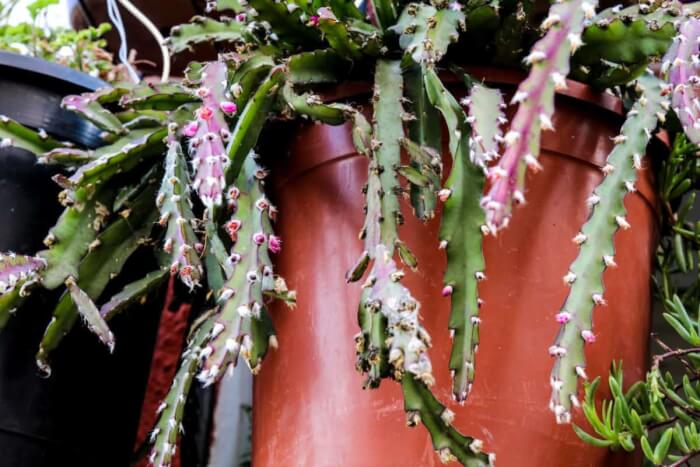
A member of the Cactaceae family, Lepismium Cruciforme is a perennial cactus with flowers. Similar to Rhipsalis plants, this plant has thin, branching, and trailing stems. Usually cultivated for its leaves, this plant has succulent, pencil-shaped branches that drape gracefully over pot rims.
#22. Trachyandra (Trachyandra)

This succulent has white to gray flowers in late winter and early spring on a sturdy flower stalk rising from the base of the plant. In the late winter to early spring, Trachyandra plants start to bloom. The plant produces a single stalk of pale pink, white, or gray blooms.
#23. Alocasia Stingray (Alocasia Macrorrhiza ‘Stingray’)
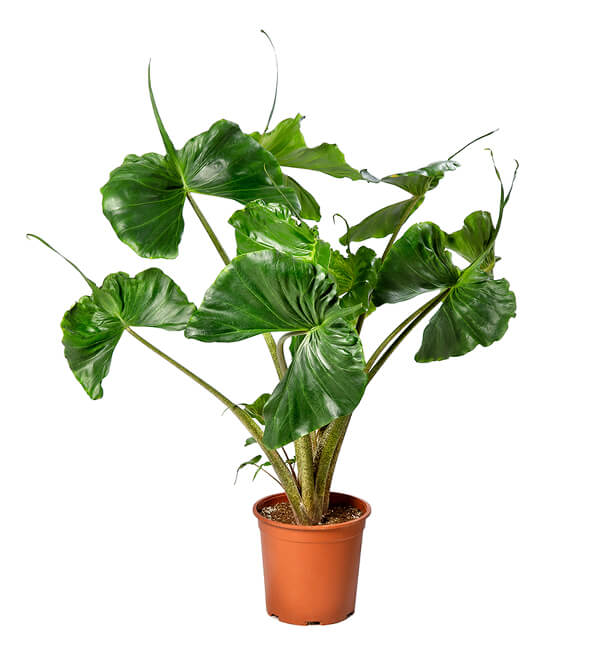
Alocasia The leaves of the stingray plant is striking because of how well it mimics the morphology of the stingray, a type of sea mammal. It features flat, leathery leaves with upward-pointing, inward-curving tips.
#24. Chinese Jade (Sinocrassula Yunnanensis f. Cristata)
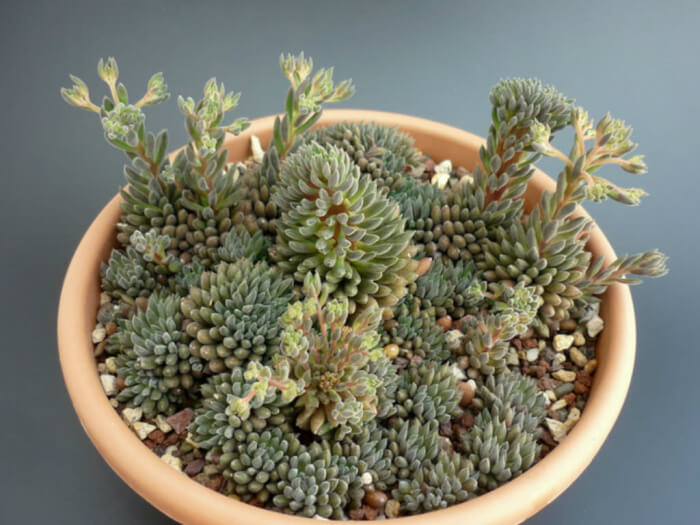
The succulent plant species Sinocrassula Yunnanensis is really cute and resembles a little hedgehog. They feature compact, clumped leaves with tiny, sharp points that are shaped like a rosette. These plants are succulents, which are native to the desert and have extremely hard exteriors that allow them to withstand droughts, hot temperatures, and dry air.
#25. Cooperi Haworthia (Haworthia Cooperi)
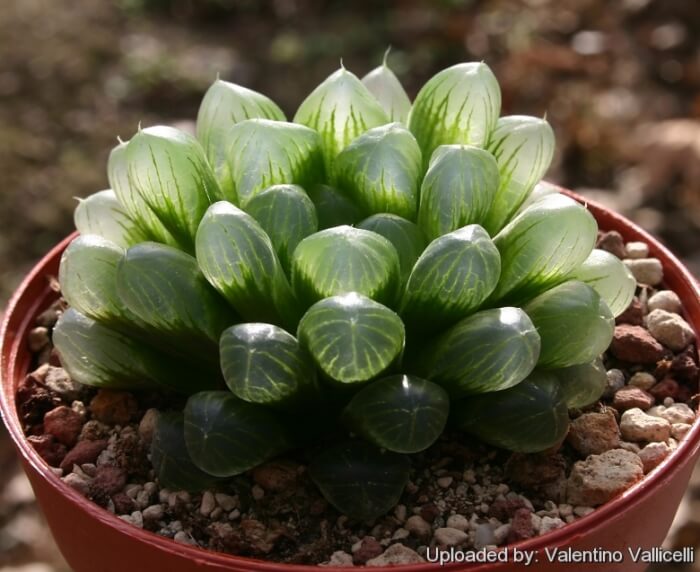
Small and sometimes growing in thick clusters, the succulent Haworthia Cooperi is a favorite indoor plant in colder climes. It’s simple to maintain; all it needs is a sunny, warm position and sporadic watering. Its rosette-shaped, blue-green leaves have a fleshy, glossy look and are squishy in texture.
#26. Venus Flytrap (Dionaea Muscipula)
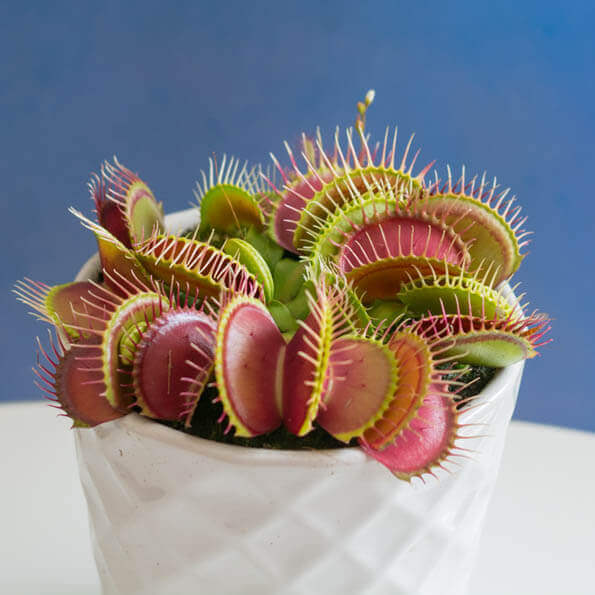
These plants may endure up to 20 years in their native habitat, which is a swamp or bog. The Venus flytrap often stands one foot tall. A hinged leaf with bristles that resemble hair on either half is the distinguishing characteristic of this carnivorous plant.
